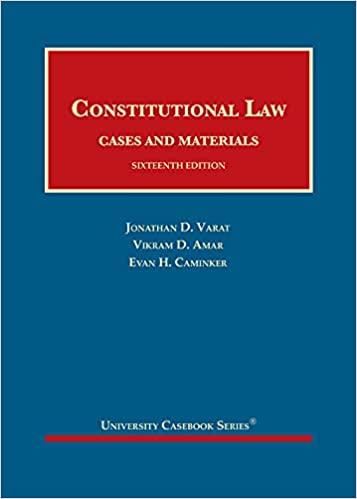Question
COPYRIGHT LAW FACTS OF THE CASE: Rosie was a painter in Cleveland, Ohio in the early part of the twentieth century. Her most important work
COPYRIGHT LAW
FACTS OF THE CASE:
Rosie was a painter in Cleveland, Ohio in the early part of the twentieth century. Her most important work was a triptych of paintings that she completed shortly before her death in 1942. (A triptych is a group of three paintings that are meant to be displayed together.) The triptych includes three photorealistic oil paintings depicting crumpled sheets of white paper on darker backgrounds. Each of the paintings is about eighteen inches tall. They are reproduced, with their names, below: Stag Cirrus Meadow Rosie worked with her partner, Beatrice, to produce the paintings. Rosie and Beatrice discussed the paintings that Rosie wanted to make, and Beatrice assisted by preparing photographic "studies" for the paintings. Beatrice crumpled up paper and tossed it on a table. Then she photographed it using black and white film. Rosie used Beatrice's studies to create the final oil paintings. Beatrice did none of the painting. None of the photographic studies has survived.
Rosie's paintings were displayed at a gallery in Cleveland for six months in 1941 and then periodically over the next two decades. Altogether, the paintings were on public view for a total of about 40 months. At least once, a photographic reproduction of Cirrus was made for the gallery's catalog. The paintings were eventually purchased by a private collector in 1968, and they were not displayed publicly for many years thereafter. Beatrice died in 1960. In the early 2000s, the Cleveland Museum of Art began planning a show on Midcentury Midwestern Painters. The museum learned about Rosie's crumpled paper paintings and decided to include them in the show. The show ran for nine months in 2010. Along with the show, the museum published a large coffeetable-style book to accompany the exhibition. The triptych was included in the book, in black and white photographs that were slightly larger than the ones you 3 see above. The book included a 12,000 word essay by an art historian, and the essay discussed Rosie, her relationship with Beatrice, and the triptych for about 900 words. In both the exhibition and the book, Rosie was described as the paintings' creator. The museum paid the collector's son, who inherited the paintings, about $1000 to display the paintings and to photograph them for the book. The museum did not pay any other compensation. It was at this point that Nancy, Beatrice's daughter, learned about her mother's work with Rosie and of the images that were created. Several years later, Nancy also learned about a series of photographs created by a Serbian artist named Sebastian. Sebastian created a series of fiftytwo photos of crumpled sheets of paper. He created one per week over the course of the year 2015. Nancy particularly noticed the following three photographs from the series: Deer Elephant Swan Nancy has attempted to contact Sebastian, but he has not responded to her messages. She can tell from his Instagram account that he was traveling in the United States for about a month in 2014, and he posted pictures of himself at museums and galleries in Chicago, Detroit, and Pittsburgh.
Nancy has contacted your law firm for assistance. She is interested in learning about her legal rights. She has been in contact with Omar, whom she believes to be Rosie's nearest living relative. In the years since the Cleveland Museum exhibition, interest in Rosie and Beatrice's work has grown considerably. Nancy and Omar have been contacted by a documentarian who is interested in making a movie about their relatives, and other museums want to exhibit the paintings. Nancy tells you that she is excited about these opportunities, but she also wants to make some money off of the art, while preserving her mother's legacy. A partner at your firm has asked you to write a memo explaining any legal interests and liabilities that these people and institutions may have.
QUESTIONS:
Discuss the arguments that the parties are 4 most likely to make, and explain the legal support for those arguments. Be sure to include any information that the partner should attempt to learn from the parties and why that information will be significant to the outcome of any disputes that may arise.
Step by Step Solution
There are 3 Steps involved in it
Step: 1

Get Instant Access to Expert-Tailored Solutions
See step-by-step solutions with expert insights and AI powered tools for academic success
Step: 2

Step: 3

Ace Your Homework with AI
Get the answers you need in no time with our AI-driven, step-by-step assistance
Get Started


